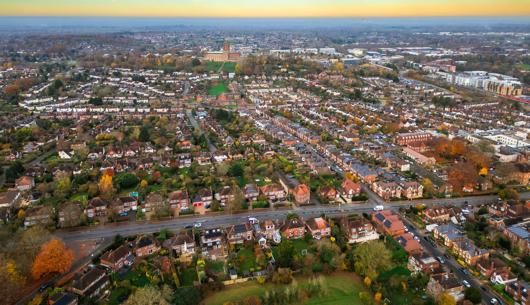A claimant’s Part 36 offer – just beat it
In the recent case of Hochtief (UK) Construction Limited, Volkerfitzpatrick Limited v Atkins Limited [2019] EWHC 3028 (TCC), the claimant made a Part 36 offer to settle of £875,000 early on in the dispute.
This article is taken from January's public matters newsletter. Click here to view more articles from this issue.
In the recent case of Hochtief (UK) Construction Limited, Volkerfitzpatrick Limited v Atkins Limited [2019] EWHC 3028 (TCC), the claimant made a Part 36 offer to settle of £875,000 early on in the dispute. Two years later, the claimant went to trial and obtained judgment in the sum of £879,848, beating its Part 36 offer by just £4,848.
While £4,848 equates to just over 0.5% of the total sum awarded by the court, that £4,848 proved to be crucial and resulted in a substantially increased payout for the defendant. Here’s why:
Settlement offers
It has long been part of the civil justice system’s ‘Overriding Objective’ that parties should try to settle their disputes and that the courts should encourage and where appropriate facilitate the use of Alternative Dispute Resolution (ADR).
To encourage parties to litigation to act reasonably in relation to settlement, the court is also able to, and often does, punish parties who have unreasonably refused to attempt or engage in ADR, when it comes to the award of costs at the end of a case.
A Part 36 offer is an offer of settlement which can be made by a claimant or defendant, but which must be made under specific terms in compliance with Part 36 of the Civil Procedure Rules – hence its name as a ‘Part 36’ offer. Offers made under Part 36 of the Civil Procedure Rules carry with them a number of consequences which are beneficial to the offeror in certain circumstances, the intention being to encourage parties to make Part 36 offers to settle their dispute and to pitch those offers sensibly in order to potentially receive the rewards that follow.
This case concerns a claimant’s Part 36 offer. A Part 36 offer made by a defendant carries different consequences, but which are similarly intended to reward a defendant who makes a Part 36 offer which the claimant fails to beat at trial.
Claimant’s Part 36 offer
If a claimant makes a valid Part 36 offer, goes to trial and then matches or does better than its Part 36 offer at trial, it is highly likely that it will be awarded the following benefits, in addition to the damages awarded by the court:
- An additional 10% of the damages awarded by the court (up to £500,000) and 5% of any amount above that figure, subject to a cap of £75,000
- Costs on the indemnity basis (resulting in a higher recovery than on the standard basis) from the expiry of the relevant period set out in the offer (this can be no less than 21 days from the date of the offer)
- Interest on damages and costs from the expiry of the relevant period set out in the offer, at a rate not exceeding 10% above base rate.
Pursuant to Part 36.17(4) of the Civil Procedure Rules, the court must apply these consequences, unless the court considers it unjust to do so.
Decision in the case
In the Hochtief v Atkins case, a breach of contract case concerning the construction of a bridge and underpass, the claimant made a Part 36 offer of £875,000 and was awarded £879,848 by the court. The claimant therefore beat its Part 36 offer, albeit only just. The defendant argued that the consequences set out above should not apply because the claimant had only beaten its offer by a very narrow margin and because the claimant had lost on a discrete point in its claim (the claim concerning the underpass).
Mrs Justice O’Farrell, sitting in the High Court, considered the circumstances of the case to decide whether or not it would be unjust to make the orders which were beneficial to the claimant. She ruled:
“… it would not be unjust to apply the provisions of CPR 36.17 in this case. The terms of the offer were clear. The part 36 offer was made at a very early stage in the proceedings, after the letter of claim but before the issue of the formal claim. By that time, extensive investigations and remedial works had been concluded. The parties had sufficient information to make an informed judgment as to the merits of the case. The offer was at a level that indicated it was a genuine attempt to settle the dispute.”
Mrs Justice O’Farrell ordered that the defendant did not have to pay the claimant’s costs of the underpass claim (which the claimant lost), but she did order the defendant to pay 85% of the claimant’s costs on the indemnity basis (to be assessed by the court) and she set the enhanced rate of interest at 6%.
The outcome was that the defendant was required to pay the claimant:
- An additional lump sum of £65,123.77
- A greater contribution towards the claimant’s costs than if those costs were assessed on the standard basis (being the norm)
- Enhanced interest at 6% on damages and costs.
The consequence to the defendant of not accepting the claimant’s well-pitched Part 36 offer turned out to be substantial.
Strategy
This case acts as a reminder of Part 36 offers and how they can be used tactically to shift risk between parties to litigation and apply pressure towards settlement. However the key is to pitch any offer at the right level – not so generous that your opponent will bite your hand off and not so unrealistic that your opponent may as well go ahead and fight to trial, but somewhere in the range of realistic outcomes which will give your opponent a difficult decision to make.
As this case shows, Part 36 offers can be a very effective and powerful tool in litigation, and should not be underestimated.
Contact

Mark Hickson
Head of Business Development
onlineteaminbox@brownejacobson.com
+44 (0)370 270 6000








































